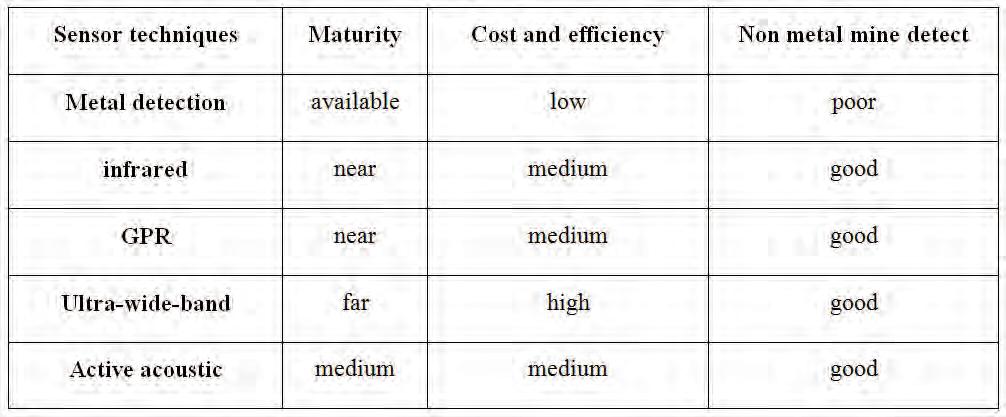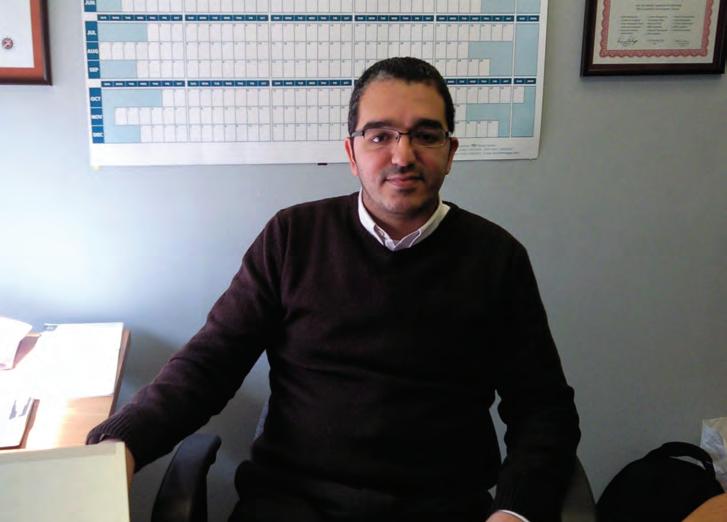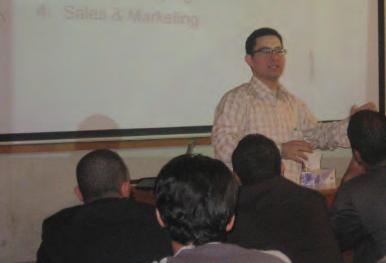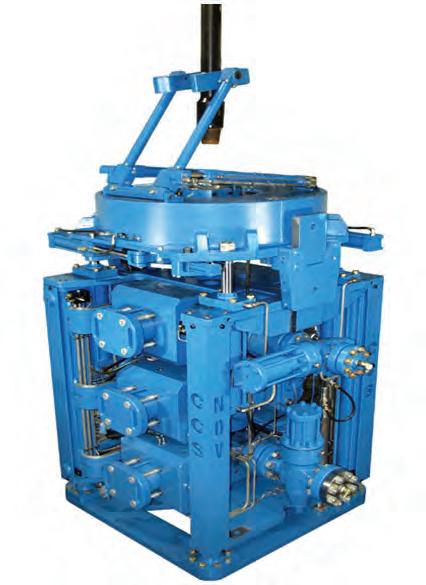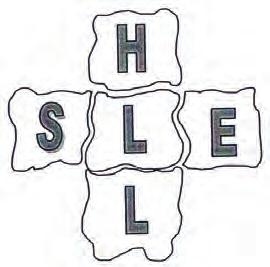
7 minute read
DEGREE OF CONFIDENCE
DEGREE OF CONFIDENCE A Driving Concept for Inspecti on
Books and references are good sources of informati on. But on great number of topics they can be someti mes vague, not to menti on; complicated and overloaded with technicaliti es and unnecessary details. That is what led us to seek a diff erent more adequate learning approach, one that depends on simplicity and directory. To achieve such a goal we went to the expert engineers of the major leading companies of the petroleum industry.
Advertisement
Dr. Eng. Hamid A. Nagy Associate Prof. Faculty of Petroleum and Mining Engineering G.M of Weld Inspecta in Sudan
Degree of confi dence simply expresses how much you are confi dent that the item you are fabricati ng or the facility you are constructi ng would be fi t for its purpose during a certain period of its service. Although this concept is rarely found in standards and specifi cati ons, and if it appears explicitly, it is menti oned parti ally such as the concept of joint effi ciency in ASME and API. Its understanding is criti cal for establishing a reliable quality control system towards which most standards and specifi cati ons are directed.
Also, degree of confi dence represents a key for comprehensive understanding of a booming technique of inspecti on called risk based inspecti on (RBI). Actually the design and the technology of fabricati on and/or constructi on together with the accuracy of implementi ng quality control steps are some of the main factors controlling the degree of confi dence but in this arti cle, we are going to focus on the extent of testi ng as the main variable achieving the resultant (fi nal) degree of confi dence and in the vicinity of this relati on the eff ect of other parameters will be more apparent. For the sake of simplicity, the extent of testi ng is to be defi ned as the percentage of items under inspecti on.
To start, let us say we have to receive 100 valves and we are going to inspect all of them using a certain procedure of testi ng, are you going to be 100% confi dent about the fi tness of the valves to serve?
The answer should not be yes because human factors interfere with the accuracy during establishing and manifesti ng the procedure of testi ng. This results in the fact that the degree of confi dence will not be 100%. Now let us say you have inspected just one valve, what will be the degree of confi dence? The answer will be in the range from 1% (if you are totally pessimisti c) to a certain percentage depending on how far you are opti misti c. This simply means; the slope of the relati on should be equal to 1 (the red line in Figure 1) or higher (the un-shadowed segment of the green line). However, the green line slope should slow down with the extent of testing to form a saddle (the shadowed segment of the green line) which is assumed to tend to a maximum value less than 100% degree of confi dence as the extent of testi ng approaches 100%. According to the green line, you can choose the extent of testi ng to be 12% only achieving 90% degree of confi dence (the dott ed verti cal line) or 100% to be 93% confi dent (The end of X-axis).
The questi on now arises does it worse to spend 8 ti mes ti me and to pay about 8 ti mes cost to move the degree of confi dence from 90% to 93% (only 3% enhancement)? Your answer will depend again on how far you are opti misti c. If we have a look at Figure 2, you will discover that the green line represents more opti - misti c thinking than the blue line. limited to- Safety factor, which is taken during design, degree of redundancy of design (number of parallel paths carrying stress and number of parallel paths having the same process) and encountering parts to ease repair such as dead legs of T-connecti ons in pipe line. Design factors include also the selecti on of appropriate material.
Category III: Technical Hazardous Factors
2- Administrati ve Factors:
You may have the best quality control manual but you are not opti misti c simply because you are not quite sure of implementati on. The knowledge, experience, administrati on capability and in most cases the brand name of the contractor, inspecti on bidder and third party enhances your opti misti c thinking. For sure qualifi - cati on of personnel plays a vital rule.
Fig. 2.
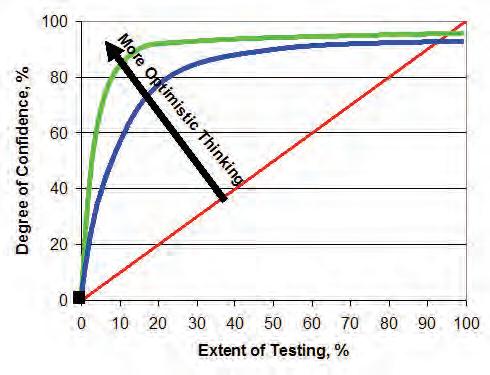
Of course personal factors aff ect the level of opti misti c versus pessimisti c thinking but there are many other factors, which could be classifi ed into fi ve diff erent categories:
Category I: Risk Hazards
This category includes safety risks and should be related to the scenarios which could take place if a disaster occurs. An example of that is the risk of hydrogen versus natural gas explosion. Another example is the explosion of natural gas in high bay vs. in downtown.
Some of the risk hazards are of economical nature such as the cost of shutdown which does not include only the cost of repair and re-start but also the loss of product and/or revenue. Also, the ability of stock holders of a certain company to bear risk is of economical nature.
A third group in this category represents politi cal or security implicati ons such as the depleti on of gasoline in market, during shutdown of faciliti es, which may lead to social and politi cal disturbance due to infl ati on and revoluti onary acti ons.
Category II: Design Factors
This category represents a relief of the fi rst one; meaning that when the risk hazards increase, the design should be more conservati ve to have more opti misti c situati on. Design factors include - but are not Two groups could be listed under the umbrella of this category:
1- Specifi c Fabricati on or Deteriorati on Mechanism Technicaliti es:
As an example, the diffi culty of welding in 3G positi on as compared with fl at and horizontal welds necessitates more extent of testi ng to be directed towards verti cal welds aft er constructi ng the tank. Another example is the diff erence between seam and girth welds in pipelines, which undergoes typically more hoop stress (normal to seam weld) as compared with longitudinal stresses (normal to girth welds). A third example is the ability of pitti ng to grow verti cally leading to more suscepti bility in bott om and to a lesser extent in roof as compared with high courses of shell.
2- Service Factors:
Cryogenic temperatures, cyclic loading, heati ng and cooling cycles, injecti on of certain chemicals in pipelines, and nature of soil are usual examples included in this group. Category V: Testi ng Cycle
As an example, proof testi ng will not only reduce the extent of NDT (None Destructi ve Test) but its severity may also aff ect the ti me of fi rst in-service inspecti on. Good stati sti cal and scienti fi c treatment of in-service inspecti on results will widen the minimum ti me required for next inspecti on leading to more opti misti c thinking. This category includes also the availability and accuracy of monitoring systems and ease of surveillance.
Degree of Confi - dence represents a key for comprehensive understanding of Risk based Inspecti on
Category IV: Quality Control Factors
This category could also be represented in two groups:
1- Quality Control Stages: Simply answer the following questi ons and you will discover the problemati c yourself: a) How accurately do you receive the material and audit the manufacturer of each part? b) How is the procedure of fabricati on (e.g. Welding Procedure) established and opti mized and how accurately are welding coupons tested? c) How do you receive the coati ng materials and how do you apply them?
Thousands of questi ons may arise in your head, and the more you are sure, In general, loads of categories I and III, which are usually uncontrolled, trigger the pessimisti c thinking whereas opti mizing categories II, IV and V develops opti - misti c thinking.
Sti ll, the questi ons remain: 1- Could we provide an arithmeti c weighing factor for every category? 2- Could we have an overall weighing factor for all categories by correlati ng their individual weighing factors? 3- Could we relief the eff ect of atti tude of personnel evaluati ng the degree of confi dence? 4- Does this need stati sti cs, regression and iterati on?

